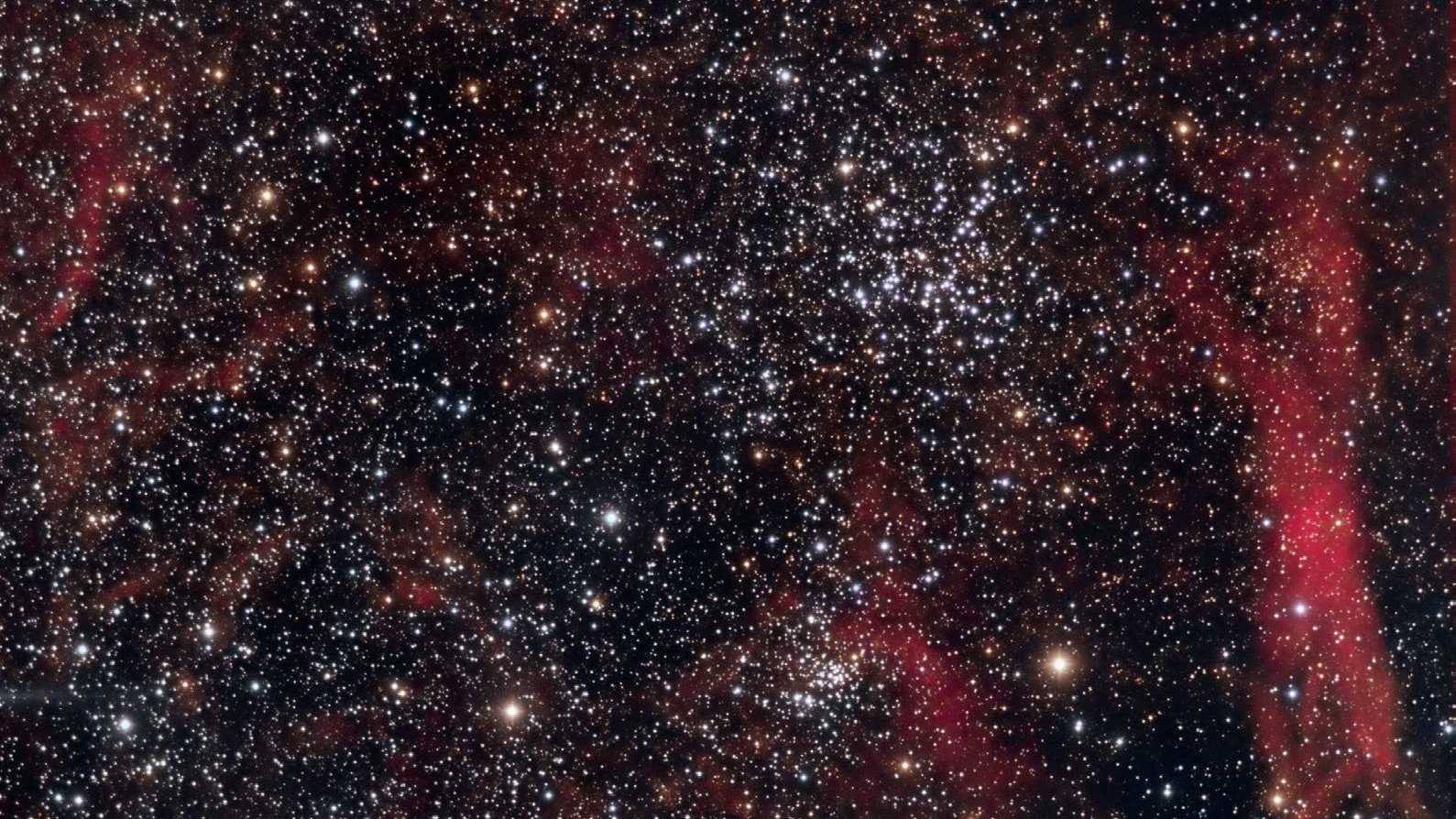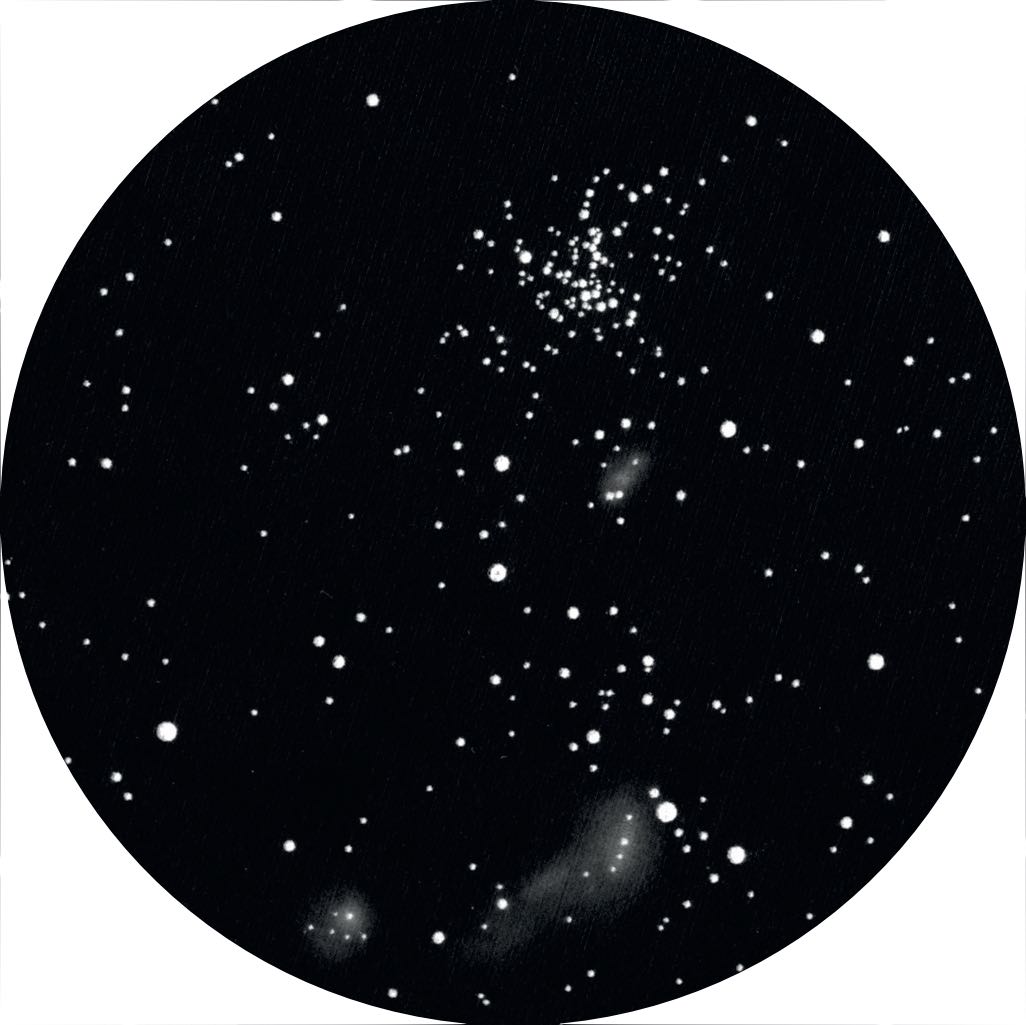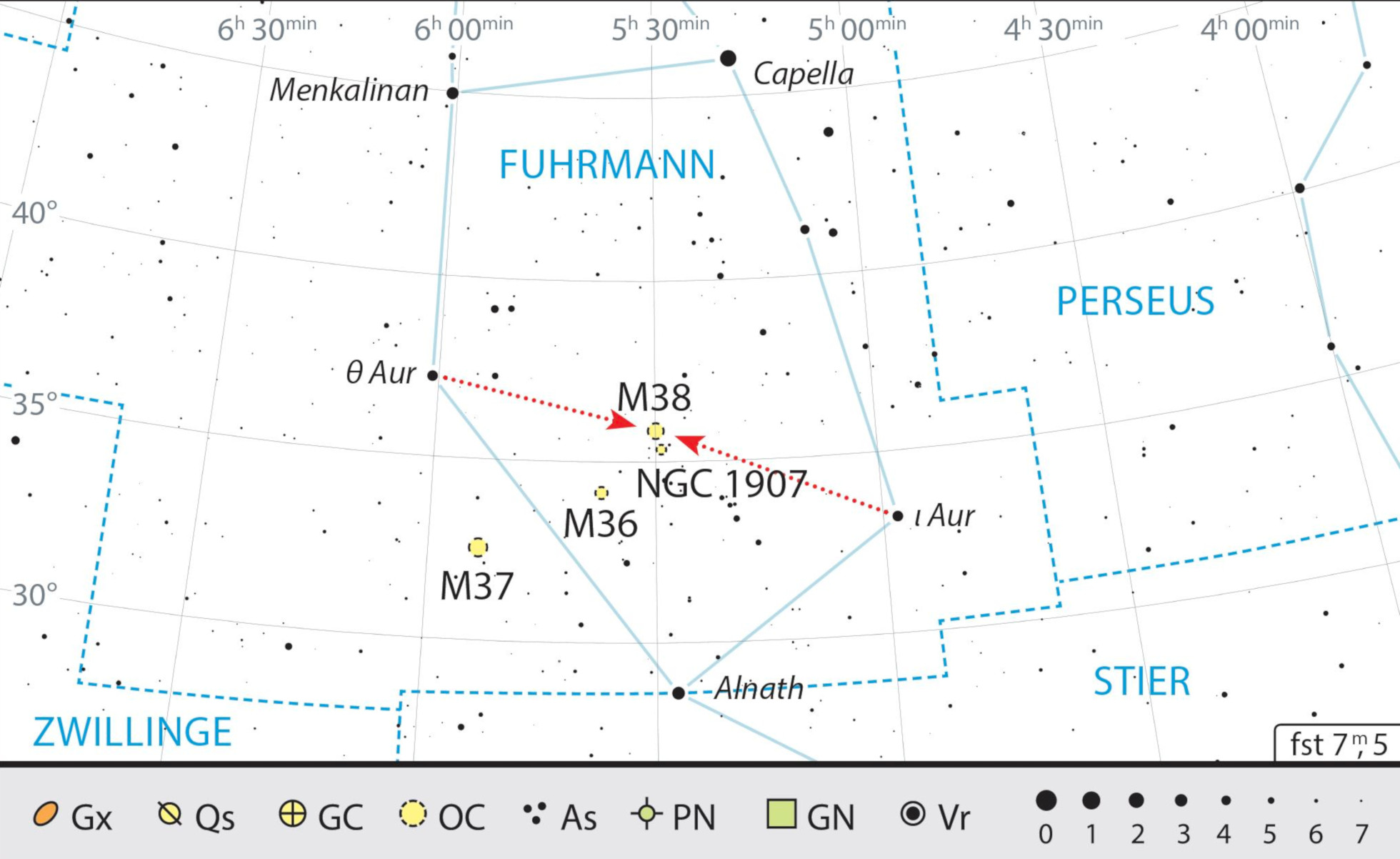M38 with a companion
What can be more fun than a deep sky object? A second cluster can be found located half a degree from M38 in the same field of view.
 M38 with neighbouring NGC 1907. Bernd Weinzierl
M38 with neighbouring NGC 1907. Bernd WeinzierlIt may not be the brightest or most star-filled object of the well-known trio of open clusters M36, M37 and M38 in the constellation of Auriga, but with M38 you get two clusters for the price of one. Its companion, known as NGC 1907, is just half a degree away from the Messier cluster, so that they were once suspected to be a possible double cluster. NGC 1907 is roughly 6,000 light years away from us, whereas M38 is just 3,500 light years away. However, both open star clusters are around 300 million years old.
A π formed by stars
 Drawing of M38. North is at the bottom. Peter Kiss
Drawing of M38. North is at the bottom. Peter KissM38 is the western-most of the well-known Messier cluster trio in Auriga. It’s easy to find between the stars ι and θ Aur with binoculars and, if the conditions are good, with 10×50 binoculars you can even see the first of the cluster’s stars twinkling. These have a brightness of magnitude 9; the brightest star with magnitude 7.9 is to be found at the north-eastern edge of the cluster. M38 is 15’ wide, as Charles Messier noted a good 250 years ago. A small refractor is sufficient to completely resolve the nebulous speck; more than 100 stars are brighter than magnitude 12.
Its brightest stars form the shape of an oblique cross or the Greek letter π. With a large field of view you should be able to observe the cluster together with its southerly neighbour without difficulty.
A fairly compact cluster
Half a degree south of this Messier cluster is its companion. Despite being close to M38, the neighbouring cluster NGC 1907 remained undiscovered until 1787. It was none other than Wilhelm Herschel who identified it at the very beginning of the year, a few days after he discovered Titania and Oberon - the brightest moons of Uranus. The astronomer described a "fairly compact cluster of small stars, 4' diameter." However, you won’t need Herschel's 20-foot telescope with a 18.7 inch aperture to observe this cluster. Even with a 100-mm refractor, NGC 1907 appears granulated; the brightest stars in the cluster are magnitude 11.3. With a larger aperture, between two and three dozen stars are visible.
 The two clusters are easy to find halfway between the stars ι and θ Aur. J. Scholten
The two clusters are easy to find halfway between the stars ι and θ Aur. J. ScholtenAuthor: Nico Schmidt / Licence: Oculum-Verlag GmbH
